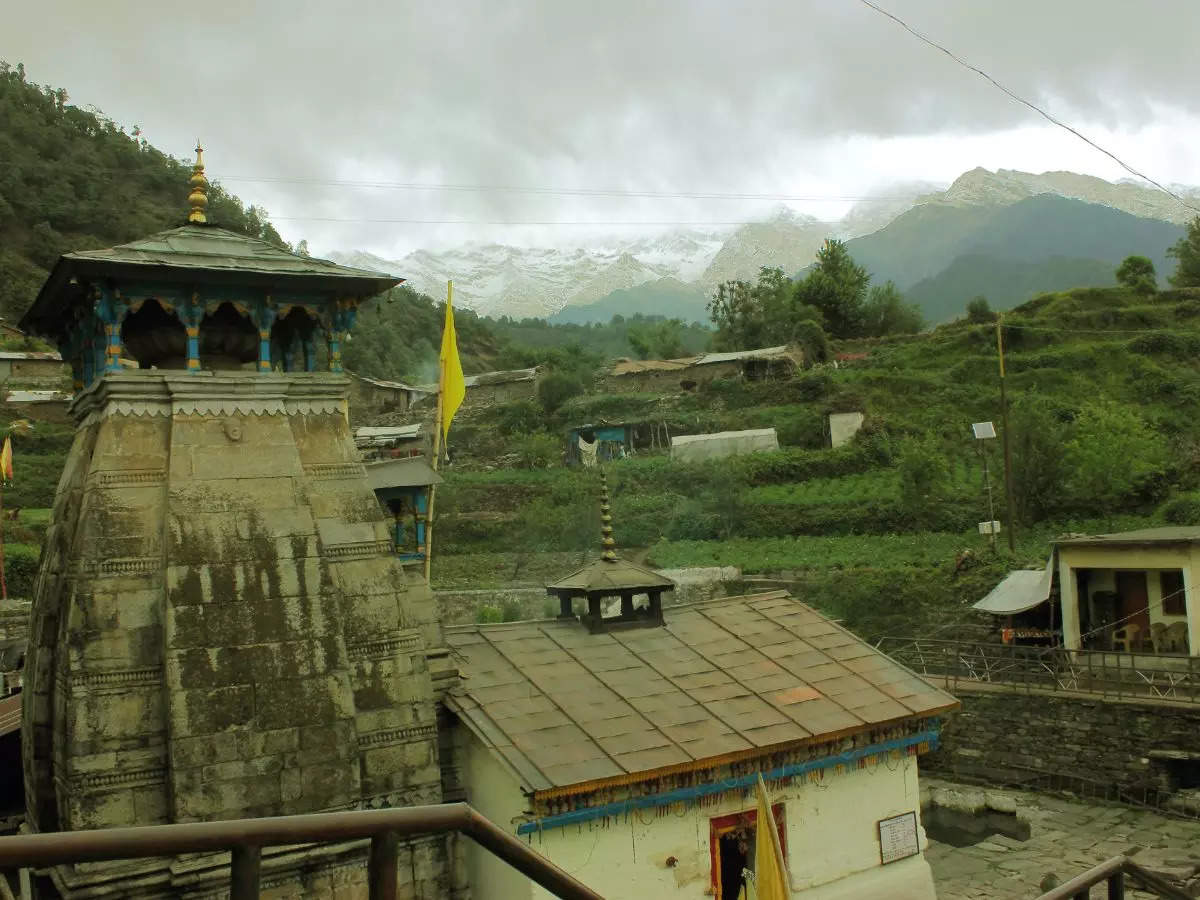Kedarnath Tour Package from Delhi: Embark on a Spiritual Journey to the Himalayas
Published on February 12, 2025
Nestled amidst the towering peaks of the Himalayas, Kedarnath stands as one of India's most revered pilgrimage destinations, drawing millions of devotees and travelers each year. Located in the Rudraprayag district of Uttarakhand, this sacred town is home to the Kedarnath Temple, one of the twelve Jyotirlingas dedicated to Lord Shiva. The temple’s spiritual significance transcends its physical grandeur, making it a cornerstone of Hindu devotion and an essential stop on the Char Dham Yatra—a holy pilgrimage that every devout Hindu aspires to undertake at least once in their lifetime.
Kedarnath’s allure lies not only in its religious importance but also in its breathtaking natural beauty. Surrounded by snow-capped mountains, pristine rivers, and lush valleys, the town offers a serene and awe-inspiring environment that complements the spiritual journey of its visitors. For centuries, pilgrims have braved challenging terrains and unpredictable weather to reach this sacred site, driven by faith and the promise of divine blessings. The trek to Kedarnath, whether undertaken on foot or by pony, is itself a transformative experience, symbolizing the arduous yet rewarding path to self-discovery and spiritual enlightenment.
The Kedarnath Temple, believed to have been established by Adi Shankaracharya in the 8th century, is steeped in mythology and history. According to legend, the Pandavas from the Mahabharata sought Lord Shiva’s blessings here to absolve themselves of the sins incurred during the Kurukshetra war. This mythological connection adds a layer of mystique to the temple, making it a site of profound historical and cultural importance. The temple’s architecture, with its intricate carvings and robust stone structure, reflects the artistic brilliance of ancient artisans and serves as a living testament to India’s rich heritage.
For those embarking on a Kedarnath tour package from Delhi, the journey is more than just a travel itinerary—it is a deeply personal and transformative experience. The trip begins in the bustling capital city, where modernity and tradition coexist, and culminates in the tranquil embrace of the Himalayas. Along the way, travelers traverse through picturesque landscapes, quaint villages, and winding mountain roads, each offering glimpses into the diverse tapestry of Indian culture. The tour is carefully curated to ensure comfort, convenience, and a seamless spiritual experience, allowing pilgrims to focus on their devotion without worrying about logistical challenges.
A Kedarnath tour package typically includes transportation, accommodation, guided assistance, and meals, ensuring that travelers are well taken care of throughout their journey. Whether you are a seasoned pilgrim or a first-time visitor, the package provides a structured yet flexible itinerary that caters to individual preferences. From helicopter services for those seeking a quicker and less strenuous journey to traditional treks for adventurers, there are options to suit every traveler’s needs. Additionally, the package often includes visits to nearby attractions such as Guptakashi, Triyuginarayan, and Gaurikund, enriching the overall experience with cultural and historical insights.
Embarking on a Kedarnath tour from Delhi is not merely about reaching a destination; it is about embarking on a spiritual odyssey that connects you with the divine, nature, and your inner self. It is an opportunity to step away from the chaos of daily life and immerse yourself in the tranquility of the Himalayas, where the air is crisp, the surroundings are majestic, and the soul finds solace. As you prepare to undertake this sacred journey, you can look forward to an experience that is as enriching as it is unforgettable—one that will leave an indelible mark on your heart and spirit.
Journeying Through Time: The Historical and Cultural Tapestry of Kedarnath
To truly appreciate the magnificence of Kedarnath, one must delve into its storied past—a narrative woven with threads of mythology, history, and cultural evolution. The Kedarnath Temple, a jewel in the crown of Indian spirituality, stands as a testament to the enduring legacy of devotion and craftsmanship that has shaped this sacred site over centuries. Its origins trace back to the 8th century when the revered Hindu philosopher and theologian Adi Shankaracharya is said to have re-established the temple, reviving its prominence as a center of Shaivite worship. This act of restoration was not merely architectural but symbolic, reinforcing the temple’s role as a spiritual beacon for generations to come.
The temple’s design reflects the pinnacle of ancient Indian architecture, characterized by its robust stone construction and intricate carvings that narrate tales from Hindu mythology. The use of massive stone slabs ensures structural resilience against the harsh Himalayan climate, while the detailed engravings depict scenes from the Puranas and the Mahabharata, offering visual sermons to pilgrims. The temple’s alignment along a north-south axis is believed to channel cosmic energies, creating a sacred space that fosters spiritual awakening. Inside, the sanctum sanctorum houses the iconic conical rock formation known as the Jyotirlinga, representing Lord Shiva’s divine presence. This unique representation underscores the temple’s centrality in Shaivite traditions and highlights the ingenuity of its creators.
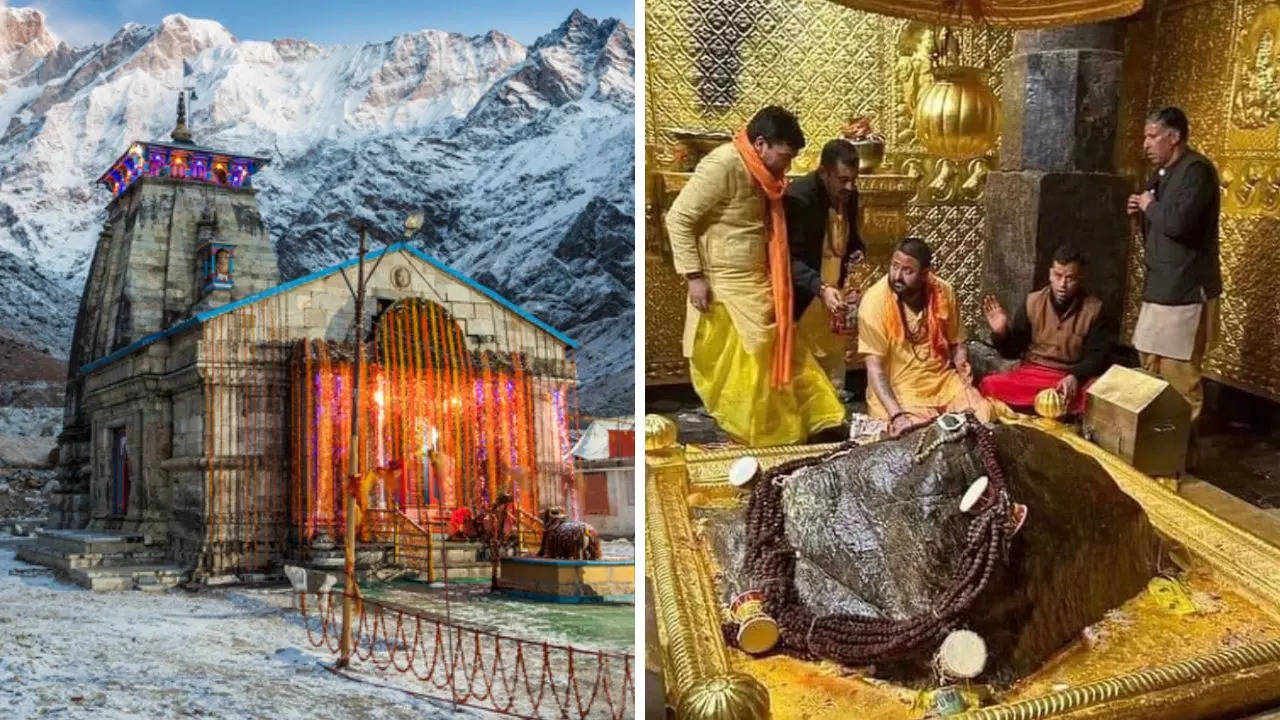
Beyond its architectural marvels, the Kedarnath Temple holds immense cultural significance. It is intricately linked to the epic Mahabharata, which recounts the Pandavas’ quest for redemption after the Kurukshetra war. According to legend, the Pandavas sought Lord Shiva’s blessings to absolve themselves of the sin of fratricide. However, Shiva, unwilling to grant them audience easily, transformed into a bull and concealed himself among herds near Guptakashi. Recognizing him, Bhima, the strongest of the brothers, attempted to seize the bull by its tail and hind legs. In response, Shiva submerged himself into the ground, leaving behind his hump, which is worshipped today as the Jyotirlinga in the Kedarnath Temple. This mythological narrative not only deepens the temple’s spiritual resonance but also reinforces themes of perseverance, humility, and divine grace—values that continue to inspire pilgrims.
Culturally, Kedarnath serves as a custodian of traditions, rituals, and festivals that have been passed down through generations. Daily pujas, seasonal ceremonies, and special offerings create a vibrant tapestry of religious practices that connect devotees to their heritage. During Maha Shivaratri, the temple transforms into a hub of spiritual energy, drawing thousands of pilgrims who seek blessings and participate in communal celebrations. These events are not mere observances but living embodiments of cultural continuity, fostering a sense of unity and shared identity among participants.
Moreover, Kedarnath plays a pivotal role in preserving local arts, music, and crafts. Artisans and performers find a platform to showcase their skills during religious festivities, ensuring that these cultural expressions remain alive and relevant. The temple’s presence has also spurred the development of ancillary services such as lodging, food, and transportation, contributing significantly to the local economy. This symbiotic relationship between the temple and its surrounding communities underscores the interconnectedness of spirituality, culture, and livelihood.
As we reflect on the historical and cultural significance of Kedarnath, it becomes evident that the temple is far more than a physical structure—it is a living legacy. Its enduring appeal lies in its ability to transcend time and geography, offering pilgrims and travelers a glimpse into India’s rich spiritual and cultural heritage. Whether viewed through the lens of mythology, history, or contemporary relevance, Kedarnath remains a timeless symbol of faith, resilience, and human aspiration. For those embarking on a Kedarnath tour package from Delhi, the journey is not just about reaching a destination but about immersing oneself in the profound stories and traditions that define this sacred site.
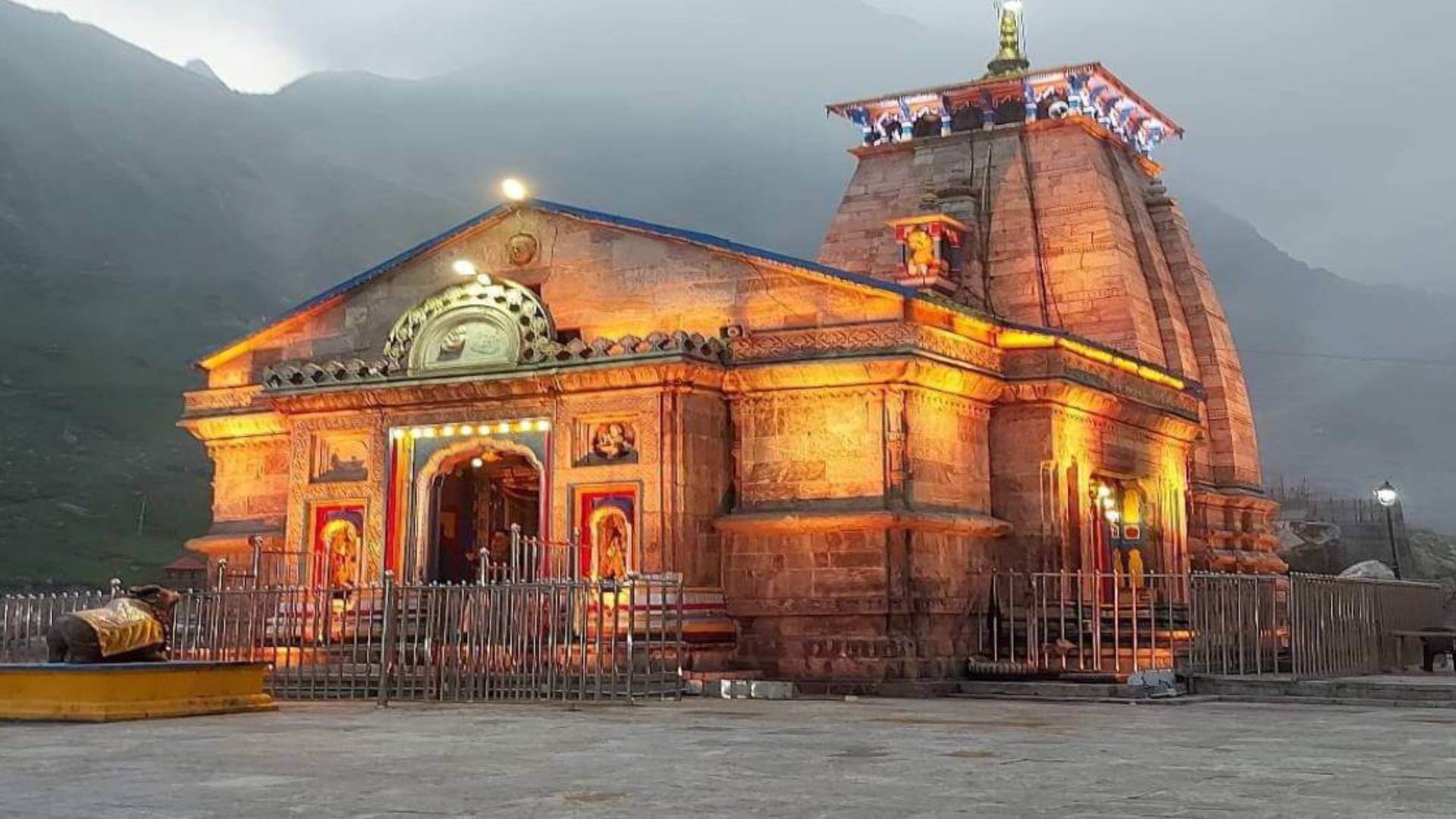
Navigating the Path: A Detailed Itinerary for Your Kedarnath Tour Package from Delhi
Embarking on a Kedarnath tour package from Delhi is a meticulously planned journey that combines convenience, adventure, and spiritual fulfillment. To ensure a seamless experience, understanding the day-by-day itinerary is crucial, as it outlines the key stops, activities, and logistical arrangements that make this pilgrimage both accessible and memorable. Below is a comprehensive breakdown of what to expect during your spiritual odyssey to the Himalayas.
Day 1: Departure from Delhi to Haridwar
Your journey begins in the bustling capital city of Delhi, where you will board a comfortable AC bus or train bound for Haridwar, a sacred city located approximately 230 kilometers away. Known as the "Gateway to God," Haridwar is a vital starting point for pilgrimages to the Char Dham. Upon arrival, you will check into a pre-arranged hotel, where you can freshen up and relax after the journey. The evening offers an opportunity to visit the iconic Har Ki Pauri ghat, where the Ganga Aarti takes place. This mesmerizing ritual, with its flickering lamps and soulful chants, sets the tone for the spiritual journey ahead.
Day 2: Haridwar to Guptakashi via Rishikesh and Devprayag
After breakfast, the next leg of your journey takes you deeper into the Himalayas. The drive from Haridwar to Guptakashi spans approximately 250 kilometers and passes through scenic towns like Rishikesh and Devprayag. Rishikesh, often referred to as the "Yoga Capital of the World," offers a brief stop to soak in its tranquil ambiance and perhaps visit the famous Laxman Jhula. Continuing onward, Devprayag is a significant halt, where the confluence of the Alaknanda and Bhagirathi rivers forms the sacred Ganges. By late afternoon, you will arrive in Guptakashi, a charming town steeped in mythology. Here, you can visit the ancient Vishwanath Temple before retiring to your hotel for the night.
Day 3: Guptakashi to Kedarnath
The third day marks the culmination of your pilgrimage preparations. After an early breakfast, you will embark on a scenic drive to Gaurikund, the base camp for the trek to Kedarnath. The journey covers approximately 80 kilometers and offers stunning views of the surrounding valleys and rivers. Upon reaching Gaurikund, pilgrims can choose between trekking the 14-kilometer uphill path to Kedarnath or opting for a helicopter ride, which provides a bird’s-eye view of the majestic Himalayas. The trek, though challenging, is immensely rewarding, with breathtaking vistas and moments of introspection along the way. By late afternoon, you will arrive at Kedarnath, where you can check into your pre-booked accommodation, ranging from guesthouses to tents, depending on your preferences.
Day 4: Darshan at Kedarnath Temple
The highlight of your journey unfolds on the fourth day, as you visit the revered Kedarnath Temple. Early morning darshan is recommended to avoid crowds and fully immerse yourself in the temple’s spiritual aura. The sight of the Jyotirlinga, nestled within the ancient stone walls, evokes a profound sense of reverence and connection. After completing your prayers, you can explore the temple complex and its surroundings, including the Samadhi of Adi Shankaracharya, located nearby. The rest of the day is free for reflection, meditation, or simply soaking in the serene beauty of the Himalayas. Evening rituals at the temple provide another opportunity to deepen your spiritual experience.
Day 5: Return to Guptakashi
After a fulfilling day at Kedarnath, you will begin your descent back to Guptakashi. Those who trekked to Kedarnath may opt for a pony ride or palanquin service to ease the journey, while others may choose to return via helicopter. Upon reaching Gaurikund, you will board a vehicle for the drive back to Guptakashi, where you can unwind and reflect on the spiritual milestones achieved during your pilgrimage. Dinner and overnight stay at a comfortable hotel await you.
Day 6: Guptakashi to Rudraprayag
The sixth day involves a leisurely drive to Rudraprayag, a picturesque town named after Lord Shiva. En route, you may visit the ancient Ukhimath Temple, where the idol of Kedarnath is worshipped during the winter months when the main temple is inaccessible. Rudraprayag offers a tranquil setting to rest and rejuvenate, with opportunities to explore local markets and interact with the warm-hearted locals. Overnight stay in Rudraprayag ensures a peaceful end to the day.
Day 7: Rudraprayag to Haridwar
On the penultimate day of your journey, you will depart from Rudraprayag and head back to Haridwar. The drive, spanning approximately 200 kilometers, offers ample time to reflect on the experiences and memories gathered during your pilgrimage. Upon reaching Haridwar, you can revisit Har Ki Pauri or explore other landmarks such as Mansa Devi Temple. The evening is reserved for relaxation and preparation for the final leg of your journey.
Day 8: Return to Delhi
The final day brings your spiritual odyssey to a close as you board a comfortable bus or train back to Delhi. With hearts full of devotion and minds enriched by the beauty of the Himalayas, you will carry the essence of Kedarnath with you long after the journey ends. Upon arrival in Delhi, you can bid farewell to fellow travelers and return home with cherished memories and a renewed sense of purpose.
This detailed itinerary ensures that every aspect of your Kedarnath tour package from Delhi is thoughtfully planned, from transportation and accommodation to sightseeing and spiritual activities. Whether you are a seasoned pilgrim or a first-time traveler, this journey promises to be an unforgettable blend of adventure, devotion, and cultural immersion.

Embracing the Elements: Preparing for the Kedarnath Pilgrimage
Embarking on a Kedarnath tour package from Delhi is not just a physical journey but a spiritual expedition that demands careful preparation. The pilgrimage to Kedarnath, nestled in the heart of the Himalayas, presents unique challenges due to its high altitude, rugged terrain, and unpredictable weather. To ensure a safe, comfortable, and spiritually enriching experience, it is essential to equip yourself with the right gear, adopt necessary precautions, and acclimatize effectively to the region’s demanding conditions.
Essential Gear for the Journey
The first step in preparing for your Kedarnath pilgrimage is assembling the appropriate gear. Given the challenging trek from Gaurikund to Kedarnath, which spans approximately 14 kilometers of steep and uneven terrain, sturdy footwear is paramount. Invest in a pair of well-fitted hiking boots with good ankle support and grip to navigate the rocky paths comfortably. Layered clothing is equally important, as temperatures can fluctuate dramatically between the base camp and higher altitudes. Pack thermal wear, waterproof jackets, and windproof pants to protect against the cold and sudden rain showers. A lightweight backpack is ideal for carrying essentials such as water bottles, energy snacks, sunscreen, sunglasses, and a hat to shield against the sun’s rays.
For those who prefer a less strenuous ascent, helicopter services are available, but even then, appropriate attire is necessary to withstand the chilly mountain air. Additionally, pilgrims should carry basic medical supplies, including pain relievers, antiseptic creams, and any prescribed medications, as medical facilities en route are limited. A portable oxygen cylinder may also be advisable for individuals prone to altitude sickness.
Health Precautions and Acclimatization
High-altitude travel poses inherent risks, particularly for those unaccustomed to such environments. Altitude sickness, characterized by symptoms like headaches, nausea, dizziness, and fatigue, is a common concern. To mitigate these risks, it is crucial to acclimatize gradually. Begin by spending a day or two in intermediate locations like Haridwar or Guptakashi before ascending further. Staying hydrated is equally vital; drink plenty of water and avoid alcohol and caffeine, as they can exacerbate dehydration.
Consulting a doctor before the trip is highly recommended, especially if you have pre-existing health conditions. Carry a copy of your medical records and inform your tour operator of any specific requirements. Pilgrims with respiratory or cardiovascular issues should exercise extra caution and consider consulting a specialist for advice tailored to high-altitude travel. Regular breaks during the trek, coupled with mindful breathing exercises, can help maintain stamina and reduce fatigue.

Weather Considerations and Timing
The weather in the Himalayas is notoriously unpredictable, and planning your trip during the optimal season is critical. The Kedarnath temple is open to pilgrims from late April to early November, with the peak season occurring between May and June and again in September and October. These months offer relatively stable weather, with clear skies and moderate temperatures. Monsoon season, from July to mid-September, brings heavy rainfall and an increased risk of landslides, making travel hazardous. Similarly, winter renders the region inaccessible due to heavy snowfall, necessitating the relocation of the deity to Ukhimath.
Before departure, monitor weather forecasts closely and pack accordingly. Raincoats, umbrellas, and waterproof bags for electronics are indispensable during the monsoon. Conversely, woolen clothing and insulated sleeping bags are essential for colder evenings, even in the shoulder seasons. Travelers should also remain flexible and prepared for last-minute changes in plans due to unforeseen weather disruptions.
Mental and Emotional Preparedness
While physical preparation is vital, mental and emotional readiness is equally significant for a fulfilling pilgrimage. The journey to Kedarnath is as much about introspection and devotion as it is about endurance. Setting realistic expectations and embracing the challenges as part of the spiritual process can enhance your experience. Engage in mindfulness practices, such as meditation or journaling, to cultivate a sense of calm and gratitude. Sharing the journey with fellow pilgrims can also foster camaraderie and mutual support, making the trek more enjoyable.
In conclusion, preparing for a Kedarnath tour package from Delhi requires a holistic approach that addresses physical, health, and logistical considerations. By equipping yourself with the right gear, adopting necessary precautions, and respecting the region’s environmental and climatic conditions, you can ensure a safe and enriching pilgrimage. Remember, the journey to Kedarnath is not just about reaching a destination but about embracing the elements and discovering the divine within yourself.
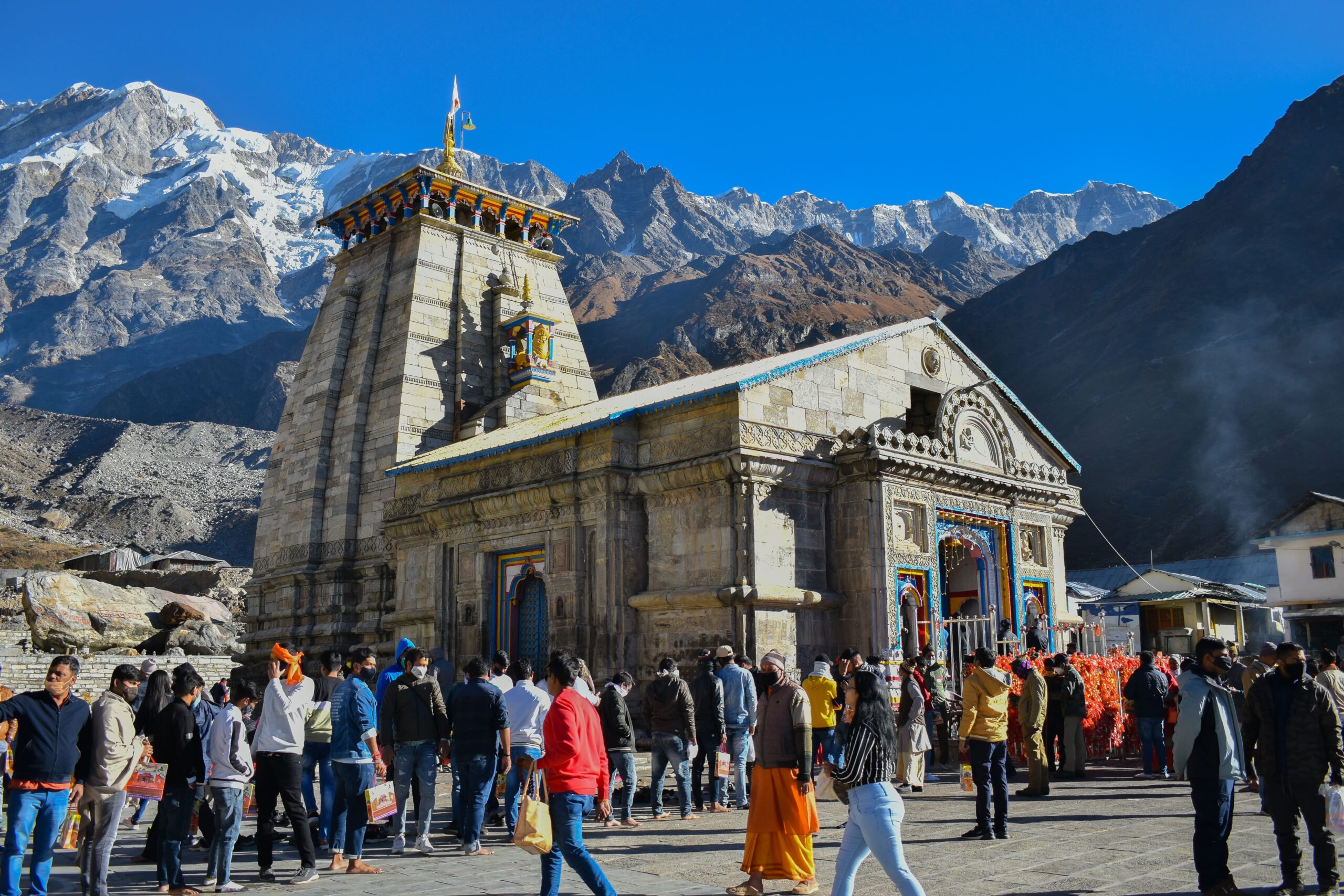
Beyond the Sacred: Exploring Nearby Attractions Around Kedarnath
While the Kedarnath Temple undoubtedly serves as the spiritual heart of this Himalayan pilgrimage, the surrounding region is dotted with numerous attractions that enrich the overall experience. These nearby sites, steeped in mythology, history, and natural beauty, offer pilgrims and travelers a chance to delve deeper into the cultural and scenic tapestry of the area. Visiting these landmarks not only enhances the spiritual journey but also provides a broader perspective on the region's significance.
Guptakashi: The Hidden Kashi
Located approximately 70 kilometers from Kedarnath, Guptakashi is a town steeped in legend and spirituality. Its name translates to "Hidden Kashi," drawing a parallel to the sacred city of Varanasi. According to mythology, Lord Shiva took refuge here in the form of a lingam to escape the Pandavas during their quest for absolution. The Vishwanath Temple, dedicated to Lord Shiva, is the primary attraction in Guptakashi and is considered a precursor to the Kedarnath Temple. Pilgrims often visit this temple to seek blessings before continuing their journey to Kedarnath. The town's serene ambiance, surrounded by lush greenery and snow-capped peaks, makes it an ideal stop for reflection and prayer.
Triyuginarayan: The Eternal Wedding Site
Triyuginarayan, located about 25 kilometers from Guptakashi, is a small yet profoundly significant village associated with the celestial wedding of Lord Shiva and Goddess Parvati. The Triyuginarayan Temple, perched atop a hill, is believed to mark the exact spot where the divine couple exchanged vows in the presence of Lord Vishnu, who acted as the officiating priest. The eternal flame, or Akhand Dhuni, burning in the temple courtyard is said to have been lit during the wedding ceremony and has remained alight ever since. This site holds immense cultural and mythological importance, drawing couples seeking blessings for marital bliss. The temple's tranquil setting, framed by towering deodar trees and panoramic views of the Himalayas, adds to its charm.
Gaurikund: Gateway to Kedarnath
Gaurikund, situated at the base of the Kedarnath trek, is a vital stop for pilgrims embarking on their journey to the temple. Named after Goddess Parvati, who is believed to have meditated here to win Lord Shiva's affection, Gaurikund is home to a sacred hot water spring and a temple dedicated to the goddess. The warm waters of the spring are said to possess healing properties, and many pilgrims take a dip before beginning their ascent. Gaurikund also serves as a hub for arranging ponies, palanquins, and helicopter services for those unable to undertake the trek. Its strategic location and spiritual significance make it an integral part of the Kedarnath pilgrimage.
Chorabari Glacier and Vasuki Tal
Nature enthusiasts and adventure seekers will find solace in the breathtaking landscapes surrounding Kedarnath. The Chorabari Glacier, located near the temple, is the source of the Mandakini River and offers stunning views of the snow-clad peaks. A short trek from Kedarnath leads to the serene Vasuki Tal, a glacial lake surrounded by towering mountains. This pristine site is ideal for meditation and photography, providing a perfect blend of spirituality and natural beauty. Both locations are reminders of the region's ecological richness and the delicate balance between human activity and environmental preservation.
Ukhimath: Winter Abode of Lord Shiva
During the harsh winter months, when the Kedarnath Temple becomes inaccessible due to heavy snowfall, the deity is relocated to Ukhimath, a town located about 40 kilometers from Guptakashi. The Omkareshwar Temple in Ukhimath serves as the winter seat of Lord Shiva, ensuring uninterrupted worship. Pilgrims visiting Kedarnath during the off-season can pay their respects here and experience the continuation of spiritual traditions. Ukhimath's tranquil environment and panoramic views of the Himalayas make it a worthwhile detour for those exploring the region.
Deoria Tal: A Mirror to the Heavens
For those seeking a blend of adventure and serenity, Deoria Tal, located near Ukhimath, is a must-visit destination. This high-altitude lake, surrounded by dense forests and towering peaks, offers a reflective surface that mirrors the majestic Himalayas. A moderate trek of about 2.5 kilometers leads to the lake, making it accessible for travelers of all fitness levels. Deoria Tal is not only a photographer's paradise but also a site of spiritual significance, as it is believed to have been visited by sages and saints in ancient times.

Choosing the Right Path: Transportation Options for Your Kedarnath Tour Package from Delhi
Embarking on a Kedarnath tour package from Delhi requires thoughtful consideration of transportation options, as the journey involves traversing diverse terrains and covering significant distances. Whether you prioritize convenience, cost-effectiveness, or flexibility, selecting the right mode of transport can greatly enhance your pilgrimage experience. Below is a detailed exploration of the various transportation methods available, complete with their advantages, limitations, and suitability for different types of travelers.
Road Travel: Buses and Private Vehicles
Road travel is one of the most popular and accessible ways to reach Kedarnath, offering a blend of affordability and scenic exploration. State-run and private buses operate regularly from Delhi to key transit points like Haridwar and Rishikesh, providing budget-friendly options for travelers. These buses are equipped with basic amenities and are ideal for those who wish to save costs while enjoying the gradual transition from urban landscapes to the serene Himalayas.
Private vehicles, including taxis and SUVs, offer a more personalized and comfortable alternative. Hiring a private car allows you to customize your itinerary, make spontaneous stops at attractions along the way, and enjoy the flexibility of traveling at your own pace. This option is particularly suitable for families, groups, or individuals who prioritize convenience and privacy. However, road travel to Kedarnath requires patience, as the journey from Delhi spans approximately 500 kilometers and involves navigating winding mountain roads, which can be challenging for inexperienced drivers.
Advantages: Cost-effective (buses), customizable routes (private vehicles), scenic views.
Limitations: Long travel time, potential discomfort on bumpy roads, dependency on weather conditions.
Best For: Budget-conscious travelers, families, and those who enjoy road trips.
Rail Travel: Reaching Key Transit Points
Rail travel is another efficient way to begin your Kedarnath pilgrimage, with trains connecting Delhi to major cities like Haridwar and Dehradun. The Indian Railways operates several express and superfast trains that ensure a smooth and comfortable journey. Once you reach these transit points, you can switch to road transport to continue your journey toward Kedarnath.
Train travel is particularly advantageous for those who prefer a hassle-free and eco-friendly mode of transport. The availability of sleeper coaches, air-conditioned compartments, and onboard catering services ensures a restful and enjoyable experience. Moreover, rail networks are less affected by weather conditions compared to roadways, making them a reliable choice during monsoon or winter months.
Advantages: Comfortable seating, affordable fares, reliable schedules.
Limitations: Limited direct connectivity to remote areas, additional road travel required post-rail journey.
Best For: Solo travelers, seniors, and those seeking a relaxed start to their pilgrimage.
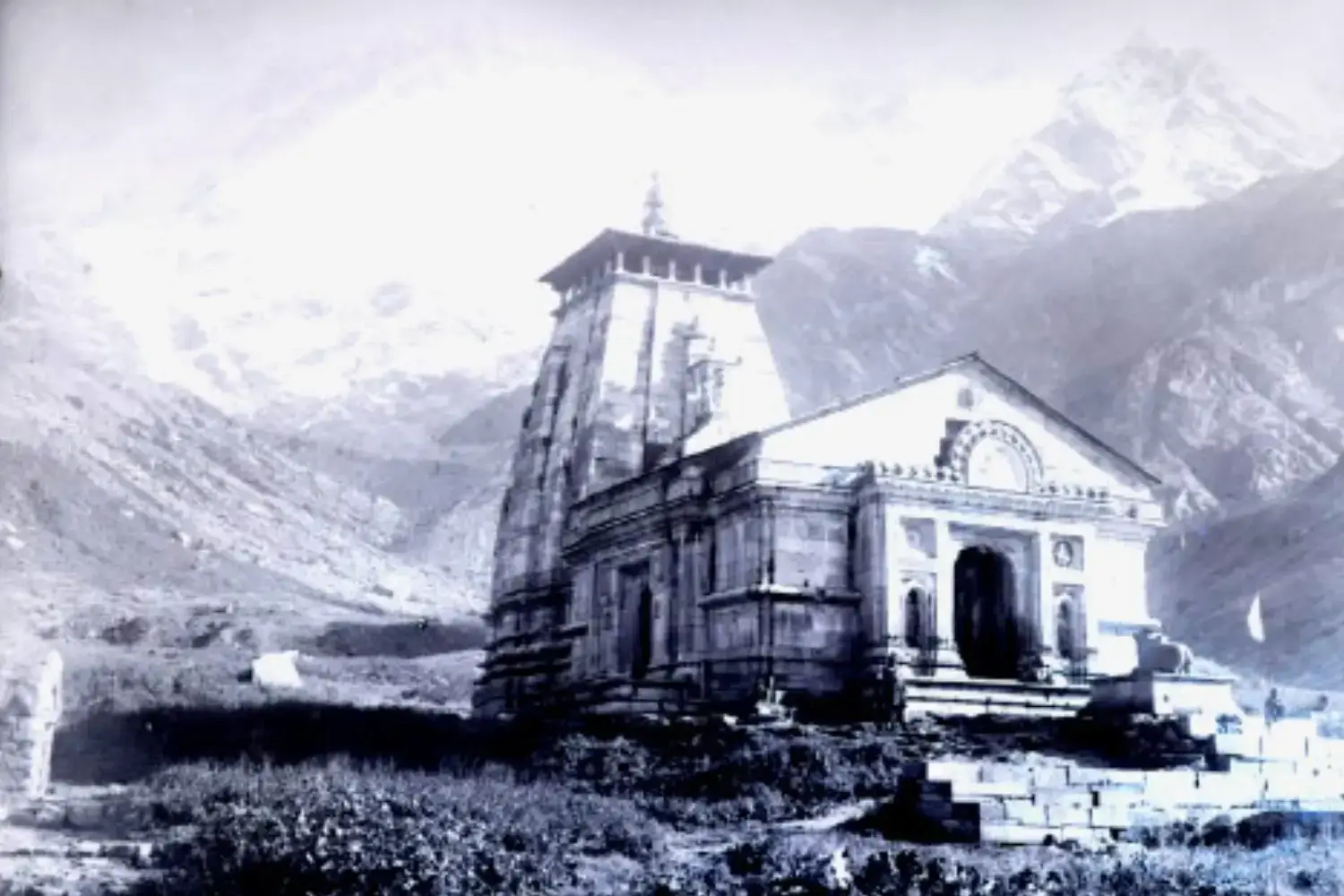
Helicopter Services: A Luxurious Shortcut
For travelers seeking speed and luxury, helicopter services present an attractive option to reach Kedarnath. Operating from key helipads like Phata, Guptakashi, and Sersi, these flights drastically reduce travel time, bypassing the need for long treks or road journeys. A helicopter ride not only offers breathtaking aerial views of the Himalayas but also provides accessibility for elderly pilgrims, individuals with health concerns, or those with limited time.
However, this convenience comes at a premium cost, making it less accessible for budget travelers. Additionally, helicopter services are subject to weather conditions, and flights may be delayed or canceled during inclement weather. Despite these limitations, the thrill of soaring above the majestic peaks and arriving directly at Kedarnath makes this option highly appealing for those who can afford it.
Advantages: Time-saving, scenic aerial views, accessibility for all fitness levels.
Limitations: High cost, weather dependency, limited seating capacity.
Best For: Business travelers, seniors, and those with time constraints or mobility challenges.
Trekking: The Traditional Pilgrim's Path
For the adventurous at heart, trekking from Gaurikund to Kedarnath is the quintessential way to experience the pilgrimage. This 14-kilometer uphill trek takes you through lush forests, cascading streams, and rugged terrains, offering a profound connection with nature and an opportunity for introspection. The physical challenge of the trek is often seen as a metaphorical journey toward spiritual enlightenment, making it a deeply rewarding experience for devotees.
While trekking is free of charge, it requires adequate preparation, including proper gear, hydration, and physical fitness. For those who find the trek daunting, alternatives such as pony rides or palanquins are available, though they come at an additional cost. Trekkers should also be mindful of altitude-related health risks and plan their journey during favorable weather conditions.
Advantages: Immersive experience, physical and spiritual fulfillment, no additional cost.
Limitations: Physically demanding, weather-dependent, unsuitable for individuals with health issues.
Best For: Adventure enthusiasts, young travelers, and those seeking a traditional pilgrimage experience.
Combining Modes for Optimal Convenience
Many travelers opt to combine multiple modes of transport to strike a balance between comfort, cost, and time efficiency. For instance, you could take a train to Haridwar, hire a private vehicle to Guptakashi, and then either trek or take a helicopter to Kedarnath. This hybrid approach allows you to tailor your journey according to your preferences and constraints, ensuring a seamless and enjoyable pilgrimage.

Final Recommendations
Choosing the right transportation method depends on your priorities and circumstances. If you value affordability and scenic exploration, road travel or rail travel might be ideal. For those seeking speed and luxury, helicopter services offer unparalleled convenience. Meanwhile, trekkers and adventurers will find the traditional path to Kedarnath both fulfilling and transformative. Regardless of the mode you choose, a Kedarnath tour package from Delhi is designed to accommodate diverse needs, ensuring that every traveler can embark on this spiritual journey with ease and confidence.
Savoring the Himalayas: Culinary Delights Along the Kedarnath Pilgrimage Route
Embarking on a Kedarnath tour package from Delhi is not just a spiritual and adventurous journey but also a culinary exploration that introduces travelers to the rich flavors and traditional cuisines of the Himalayan region. The food served along the pilgrimage route is deeply rooted in local culture, reflecting the simplicity, warmth, and resourcefulness of the communities that call these mountains home. From hearty meals designed to sustain trekkers to light, nourishing dishes that cater to the spiritual ambiance of the journey, the culinary offerings play a vital role in enhancing the overall experience of the pilgrimage.
Traditional North Indian Cuisine: A Taste of Home
For many pilgrims traveling from Delhi, the familiarity of North Indian cuisine provides comfort and a sense of continuity amid the challenging journey. Dal (lentil soup), rice, roti (flatbread), and seasonal vegetables form the backbone of most meals served at hotels, guesthouses, and roadside eateries along the route. These dishes are not only filling but also easy to digest, making them ideal for travelers adjusting to high altitudes. Spices are used judiciously to add flavor without overwhelming the palate, ensuring that the meals remain light yet satisfying.
One standout dish commonly found in the region is "kadhi-chawal," a comforting combination of yogurt-based curry and steamed rice. Another favorite is "rajma-chawal," a rich kidney bean curry paired with fragrant basmati rice. These hearty meals are often accompanied by tangy pickles, crispy papads, and cooling raita (yogurt with vegetables or spices), providing a balanced and wholesome dining experience. For breakfast, travelers can enjoy parathas stuffed with spiced potatoes, paneer (Indian cottage cheese), or cauliflower, served with a side of pickle or curd.
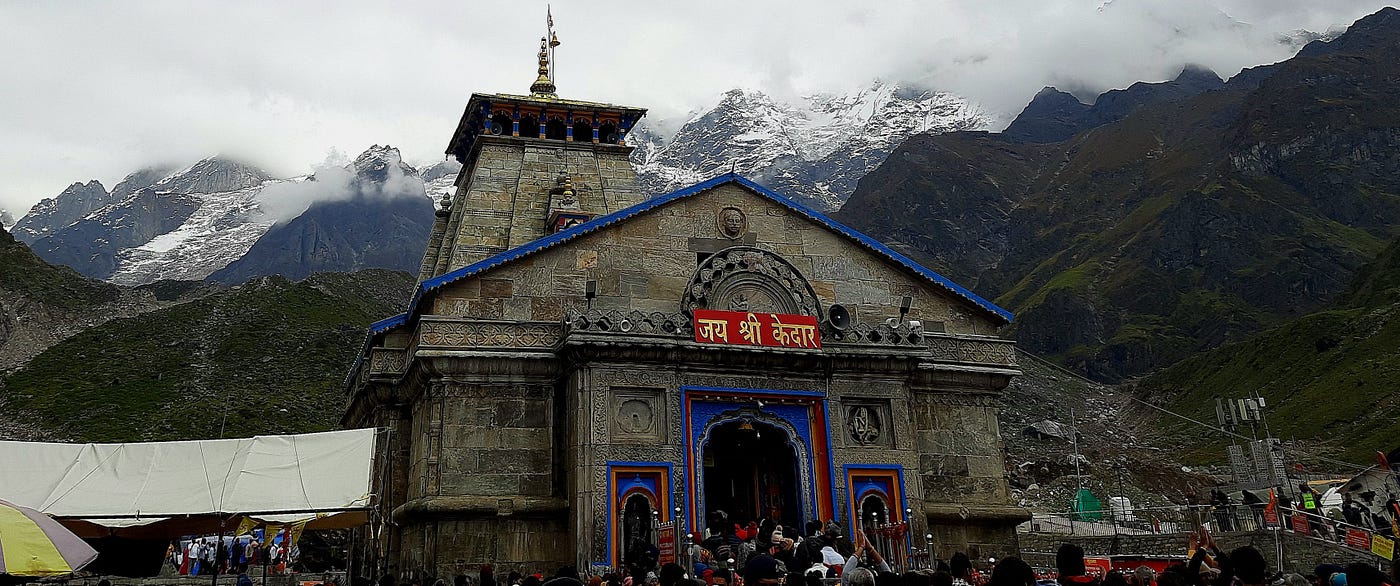
Local Garhwali Specialties: A Glimpse into Regional Heritage
As pilgrims ascend higher into the Himalayas, they encounter the distinct flavors of Garhwali cuisine, native to the Uttarakhand region. This rustic and earthy culinary tradition relies heavily on locally sourced ingredients such as millets, lentils, leafy greens, and dairy products. One of the most iconic Garhwali dishes is "kafuli," a creamy spinach-based curry made with colocasia leaves and flavored with local herbs. Often paired with steamed rice or "mandua ki roti" (flatbread made from finger millet), kafuli is a nutritious and warming dish that fuels trekkers for the challenging climb to Kedarnath.
Another regional specialty is "jhangora ki kheer," a sweet pudding made from barnyard millet, milk, sugar, and cardamom. This dessert is not only delicious but also packed with energy, making it a popular choice for pilgrims seeking sustenance during their journey. For those looking to sample savory snacks, "bhatt ki churkani" (spiced black soybean curry) and "phaanu" (a thick lentil stew) are must-try items. These dishes are often served during festivals and special occasions, offering travelers a taste of local hospitality and tradition.
Street Food and Quick Bites: Fuel for the Trek
For pilgrims undertaking the trek from Gaurikund to Kedarnath, street food stalls and small eateries along the route provide convenient and energizing options. Popular choices include "puri-bhaji" (deep-fried bread with spiced potatoes), "samosas" (savory pastries filled with spiced potatoes or peas), and "pakoras" (vegetable fritters). These quick bites are perfect for refueling during breaks and are often accompanied by a steaming cup of masala chai, which helps ward off the chill of the mountains.
Tea stalls, ubiquitous along the trekking path, serve as social hubs where travelers can pause, rest, and share stories with fellow pilgrims. The aroma of freshly brewed chai, infused with ginger, cardamom, and cinnamon, is a welcome respite from the rigors of the journey. For those seeking lighter fare, boiled corn on the cob and roasted peanuts are readily available and provide a quick burst of energy.
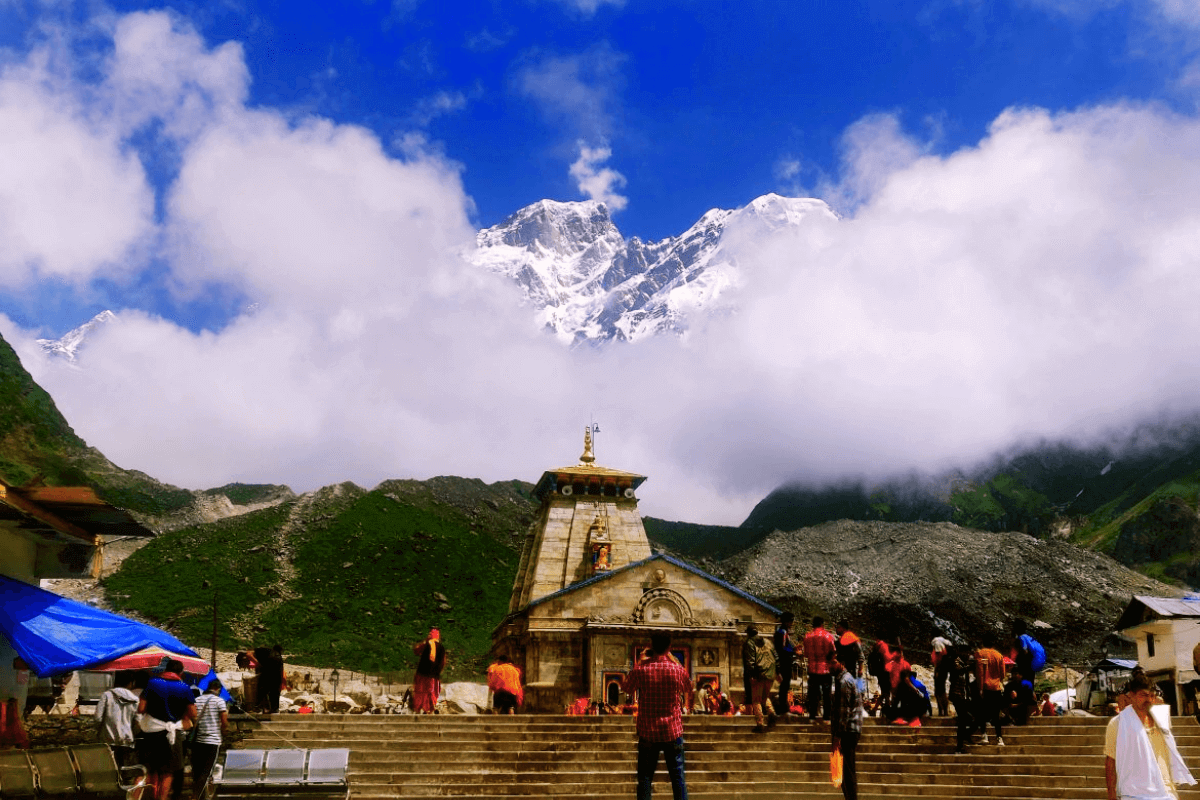
Religious Offerings and Prasad: A Spiritual Feast
No discussion of the culinary experience on a Kedarnath pilgrimage would be complete without mentioning the prasad offered at temples and ashrams. At the Kedarnath Temple itself, devotees are served simple yet sacred offerings such as "peda" (sweet milk balls), "laddoos" (round sweets made from flour, sugar, and ghee), and "halwa" (a dense dessert made from semolina or wheat). These sweets are believed to carry divine blessings and are distributed generously to pilgrims after darshan.
In addition to temple prasad, many ashrams and community kitchens along the route offer langar, a free communal meal that embodies the spirit of seva (selfless service). Langar meals typically consist of dal, rice, roti, and a vegetable curry, served on large steel plates. This practice not only ensures that no pilgrim goes hungry but also fosters a sense of unity and equality among travelers from diverse backgrounds.
Dietary Considerations and Tips for Travelers
While the culinary offerings along the Kedarnath pilgrimage route are diverse and flavorful, travelers should keep certain dietary considerations in mind. Hydration is crucial at high altitudes, so it is advisable to carry reusable water bottles and refill them at designated stations. Avoid consuming raw or uncooked foods, as they may pose health risks in remote areas. Additionally, opt for freshly prepared meals over packaged snacks to minimize waste and support local vendors.
For those with dietary restrictions, such as vegetarianism or gluten intolerance, communicating your preferences clearly to hotel staff or restaurant owners is essential. Most establishments are accommodating and can adjust their offerings to suit individual needs. Finally, savoring the local cuisine is an integral part of the pilgrimage experience, so don’t hesitate to try new dishes and embrace the flavors of the Himalayas.
In conclusion, the culinary journey along the Kedarnath pilgrimage route is a delightful blend of tradition, simplicity, and nourishment. From familiar North Indian staples to unique Garhwali specialties, the food not only sustains travelers but also connects them to the culture and heritage of the region. Whether enjoying a hearty meal at a guesthouse or sipping chai at a roadside stall, the flavors of the Himalayas leave an indelible mark on the hearts and palates of pilgrims.

Capturing the Essence: Practical Tips for Documenting Your Kedarnath Pilgrimage
Embarking on a Kedarnath tour package from Delhi is a transformative experience that deserves to be captured and cherished. Whether you’re an avid photographer, a casual documentarian, or someone who simply loves to preserve memories, documenting your journey can enhance your connection to the pilgrimage and allow you to relive its magic for years to come. From capturing the majesty of the Himalayas to preserving the spiritual moments within the temple, here are practical tips and creative ideas to help you document your Kedarnath pilgrimage effectively.
Photography: Framing the Divine and the Natural
Photography is one of the most powerful ways to document your journey, allowing you to freeze moments in time and convey the beauty and serenity of Kedarnath. To capture the essence of this sacred destination, start by focusing on the interplay between spirituality and nature. The Kedarnath Temple, with its ancient stone architecture and the towering peaks that surround it, offers countless opportunities for stunning compositions. Experiment with wide-angle shots to encompass the grandeur of the landscape, and use close-ups to highlight intricate details like the carvings on the temple walls or the flickering flames of the evening aarti.
When photographing people, seek permission before taking portraits of pilgrims, priests, or locals. Candid shots of devotees praying, performing rituals, or sharing meals can evoke the emotional and communal aspects of the pilgrimage. For group photos, position yourselves against iconic backdrops such as the temple entrance or the snow-capped peaks visible from Kedarnath. Don’t forget to capture the vibrant colors of traditional attire, prayer flags fluttering in the breeze, and the golden glow of sunrise or sunset over the mountains.
Lighting plays a crucial role in photography, especially in the high-altitude environment of Kedarnath. Early mornings and late afternoons offer soft, diffused light that enhances the natural beauty of the surroundings. Avoid shooting during midday when the harsh sunlight can create unflattering shadows. If you’re trekking, carry a lightweight camera or smartphone with a durable case to protect it from dust, moisture, and accidental drops. A portable tripod can also be invaluable for stabilizing your shots, particularly in low-light conditions.
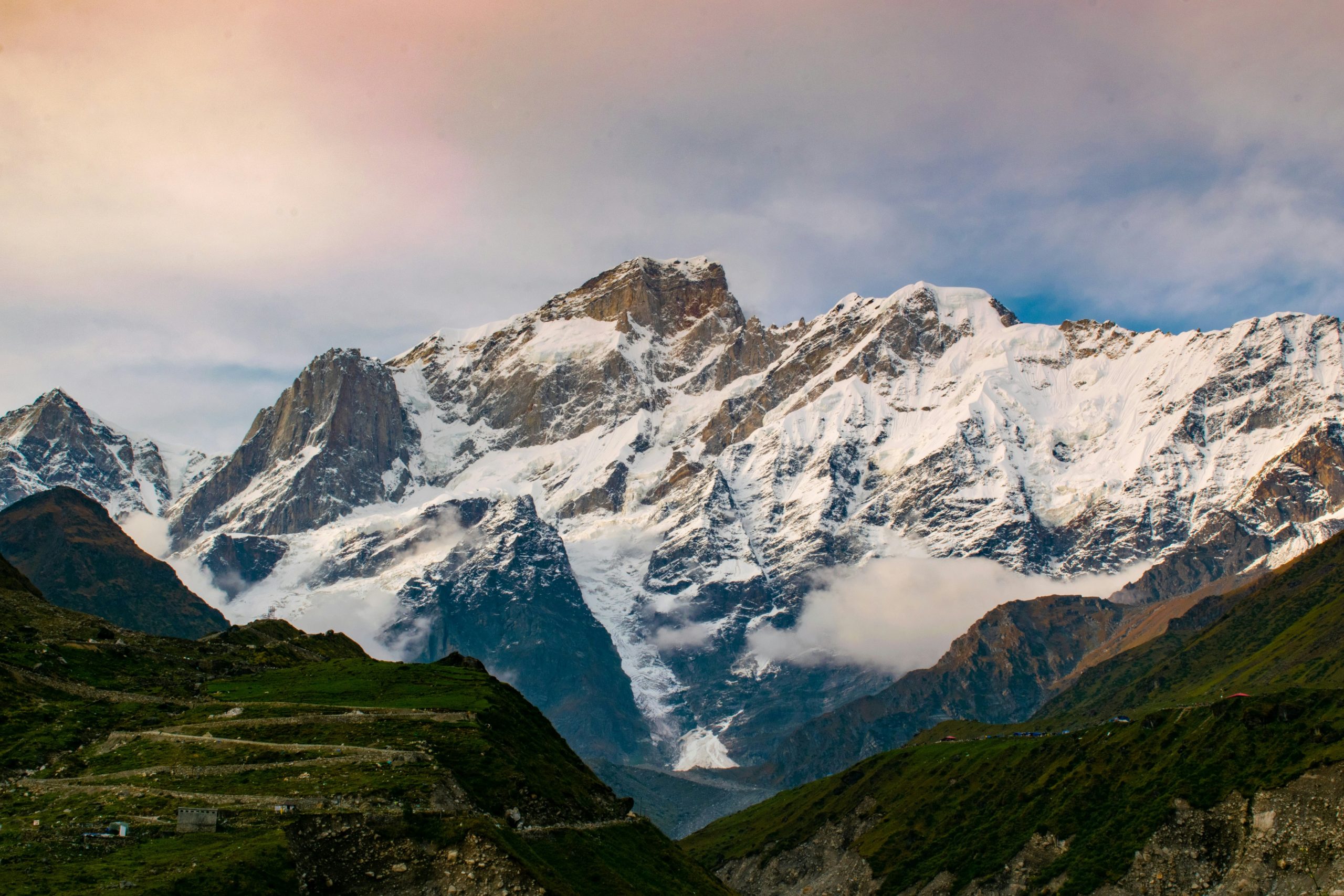
Journaling: Reflecting on the Spiritual Journey
Journaling is a deeply personal and introspective way to document your pilgrimage. Writing about your experiences allows you to process emotions, record observations, and articulate the profound impact of the journey. Begin each entry with the date and location, and describe the sights, sounds, and sensations of the day. Reflect on moments of spiritual connection, challenges faced during the trek, or interactions with fellow pilgrims that left a lasting impression.

